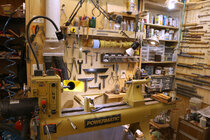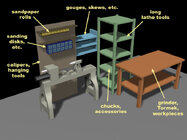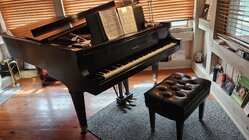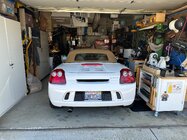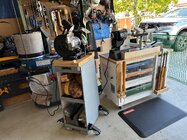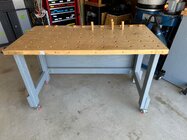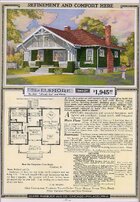Perhaps consider ditching the little lathe and buffing on the large lathe. I use three 8" buffing wheels on individual 2MT collets, quick to change.
I've never had a use for a chop saw in a turning shop, do most cutting with the bandsaw, use a handheld circular saw to break down boards not too thick, otherwise an electric chainsaw.
I like the 18" bandsaw a lot better then my older 14".
A workbench with a vise is handy, even if narrow and against one wall, shallow drawers and shelves below for no wasted space.
Some major decisions depend on the type of woodturning you want to do. For example, some really want the lathe out in the middle of the room for turning bowls/hollow forms. For what I like to turn I'm happy with the lathe against the wall and make use of the wall space behind. The space where the lathe sits 8' long, designed that way on purpose even though the shop is large.
View attachment 73473
Wall space is premium for me. I cover most with floor to ceiling shelves and cabinets for tool, supplies, and wood storage. I put 1/2" plywood on all walls so I could mount shelves everywhere. A long thread had ideas on tool storage:
I'm finding myself sticking tools hear and there and need to make a proper tool rack or cart so they are organized and accessible. I'm looking for ideas and would love to see how you have solved this. What do you like or don't like about what you have? Any plans to change or expand? Does it include chucks and other accessories?
Thanks!
Doug
If you use the OneWay Wolverine & Varigrind for sharpening cut off most of the long v support so the sharpening station doesn't need to be so deep.
When planning my multipurpose shop I made scale drawings of the space and moved paper cutouts of everything I wanted to fit, keeping walking and working space in mind.
JKJ

